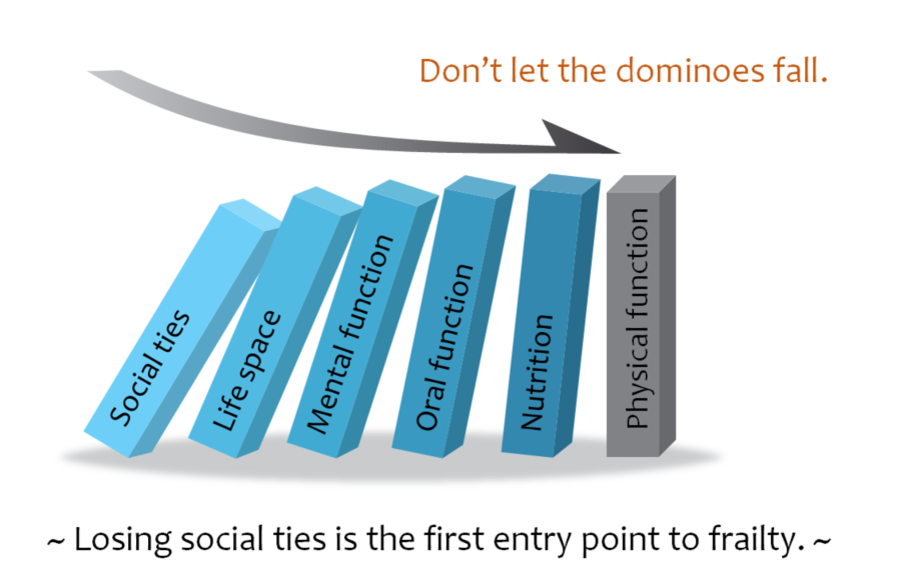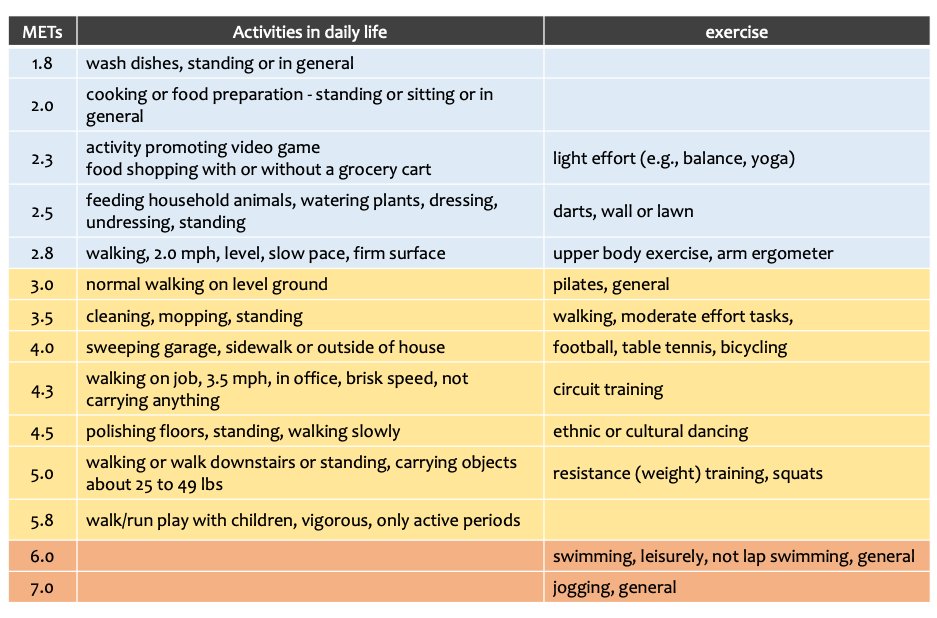![]()
Version 1.2
National Center for Geriatrics and Gerontology
Basic Exercise and Activities for Older People
With the advent of the COVID-19 pandemic, concerns have been raised that the number of older individuals who have become inactive in their daily lives and have reduced mental and physical functions may increase as people refrain from spending time outdoors. In addition, the provision of medical services, including rehabilitation, has become more difficult. To help older people live as healthily as possible under such circumstances, the National Center for Geriatrics and Gerontology (NCGG) has published a guide to activities at home, the Home Exercise Program for Older People (NCGG-HEPOP) 2020. The purpose of this guide is to introduce an easy-to-understand menu of exercises and activities that can be practiced at home according to each individual function, so that physical and mental functions do not inadvertently deteriorate. At the same time, this guide introduces appropriate nutrition. We hope that you will find this guide useful and that you will continue to live a healthy life.
Due to the recent COVID-19 pandemic and other circumstances, times arise when individuals have no choice but to reduce our social interaction. Avoiding the “three Cs” of closed spaces, crowded places, and close-contact settings is very important to protect life, but if a situation of remaining isolated and disconnected from society continues for a long time, the risk of various adverse effects on both body and mind is high. Particularly for older individuals, there is concern about the progression of frailty, in which a small amount of stress can lead to major deteriorations in health (Fig. 1).

Figure 1. Conceptual diagram of frailty: cited from Frailty Hand Book Hidenori Arai Edit., (LIFE SCIENCE CO., LTD. 2016 pp 3)
The risk of walking difficulties, falls and fractures, cognitive declines, and development of new diseases increases with frailty, so avoiding an inactive lifestyle and maintaining good health are important. To avoid the falling dominoes of mental and physical functions that have been maintained up to now (Fig. 2), performing as much exercise and activities as possible at home is crucial.

Figure 2. The Frailty Dominoes By courtesy of Prof. Katsuya Iijima, Institute of Gerontology, The University of Tokyo
The HEPOP 2020 guide to activities at home, basic exercise and activities for older individuals was created to support people refraining from going out or who are restricted from social activities so that they can safely engage in appropriate activities to prevent the deterioration of mental and physical functions while at home. In addition to presenting various types of exercises and activities, a flowchart can be used to determine which menus are most appropriate. We hope that this guide will help you to maintain your physical and mental functions and to continue living a safe and secure life.
First, answer Questions (1) to (3), and follow the flow indicated by the arrows to find the right exercise and activity package for you. In some cases, such as when the answer is “Yes” to both (1) and (3), more than one appropriate package may be selected for each answer.

Citation:
5-item self-report questionnaire for frailty (Yamada M, Arai H; J Am Med Dir Assoc. 2015 Nov 1;16(11):1002.e7-11),
The questionnaire for elderly in the later stage of life / Kihon Checklist (Japan Ministry of Health, Labour and Welfare)
Answer the flowchart questions once a month or so, or when your physical and mental condition changes, and choose those exercises and activities that you think are more suitable for you at that time. You do not have to worry about perfection. It is more meaningful to challenge yourself to exercise and engage in activities every day, so do not overexert yourself and perform activities at your own pace. If you have more than one package, check the contents of all the packages and start with the one you are most interested in. Before moving on to the exercise/activity menu of the package, check the "Precautions and Instructions for Use" and "Exercise Intensity" from the next page.

While taking these preventive measures, start exercising and engaging in activities by paying attention to the following points.
If you have any of the following diseases or symptoms, consult with your physician about your health condition and medications, and decide whether to use HEPOP 2020 or perform other exercises and activities under the guidance of your physician.






There is a guideline for the time and frequency of exercise and activities, but actions should be performed within the range of "easy" to "somewhat tough" according to your physical and mental condition. We recommend more than 20 minutes of exercise or activity. Exercises and activities should be performed for at least 20 minutes and up to 1 hour consecutively.

Table 1. Target pulse rate during exercise in each age group
The effect of the intensity of the exercise on the body can also be determined by the pulse (pulse rate). Adjust the time and frequency of exercise and activities based on the target pulse rate during exercise for each age group in Table 1 (e.g., if you are 70 years old and your resting pulse rate is 60 beats/minute, your target pulse rate during exercise is 109 beats/minute).
The strength of the movement (intensity) is expressed in METs. This shows how many times the energy is expended by the exercise or activity when the resting state is 1. Not only special exercises and activities, but also daily life and household chores can lead to exercise. Referring to the Mets table in Table 2, reflect on the intensity of your daily exercises and activities.
In addition to checking the intensity of your exercise, you can also use the Exercise (Ex) unit to calculate your own physical activity. Ex is a number of hours on the METs (except for activities under 3 METs). For example, 20 minutes of normal walking on level ground = 3.0 METs × 20/60 minutes = 1.0 Ex, 30 minutes of bicycling = 4.0 METs × 30/60 minutes = 2.0 Ex. We recommend a minimum of 10–23 Ex of physical activity each week to keep you healthy. As much as possible, we would like you to engage in more than 3 METs of exercise and physical activity to maintain and improve the amount of physical activity, but there are also exercises and activities that can be performed while lying or sitting down, when mental and physical functions are not so good. It is important to avoid being bedridden or sedentary as much as possible, and any kind of exercise or activity is good, so moving your body continuously every day is important.

Table 2. The 2011 Compendium of Physical Activities: METs
This guide focused on exercise, cognitive function, and nutrition, and introduced a variety of menus to help seniors with reduced opportunities to go out to instead undertake activities safely at home. Older people are vulnerable to infections and restrictions on social life, and it is important to be aware that frailty can easily progress, and to improve the resilience of the body and mind through appropriate sleep, nutrition, and exercise. In addition, it is important to take measures against infection, and to participate in outdoor activities to promote the activation of vitamin D in the sunshine and to regulate the rhythm of the mind and body. We hope that all of you will maintain your mental and physical health as much as possible while using this guide in your daily life, and that you will continue to play as active a role in society as you have in the past.
If you have any questions about HEPOP 2020 or require more information, please contact us at the following email address: rehab@ncgg.go.jp
We are unable to respond to inquiries over the telephone. Please note that we may not be able to respond immediately to all inquiries and may need some time to reply to you.
Aiko Osawa(Chairperson), Izumi Kondo, Shosuke Satake, Shuji Kawashima, Kenichi Ozaki, Hiroyuki Shimada, Kaori Kinoshita, Naoki Itoh, Masanori Tanimoto, Ikue Ueda, Koki Kawamura, Kenichiro Maki, Masaki Kamiya, Kenji Sato, Shota Suzumura, Yukiko Kojima, Rise Murata, Mayumi Wada, Yukihiko Washimi, Hidenori Arai
Shinichiro Maeshima